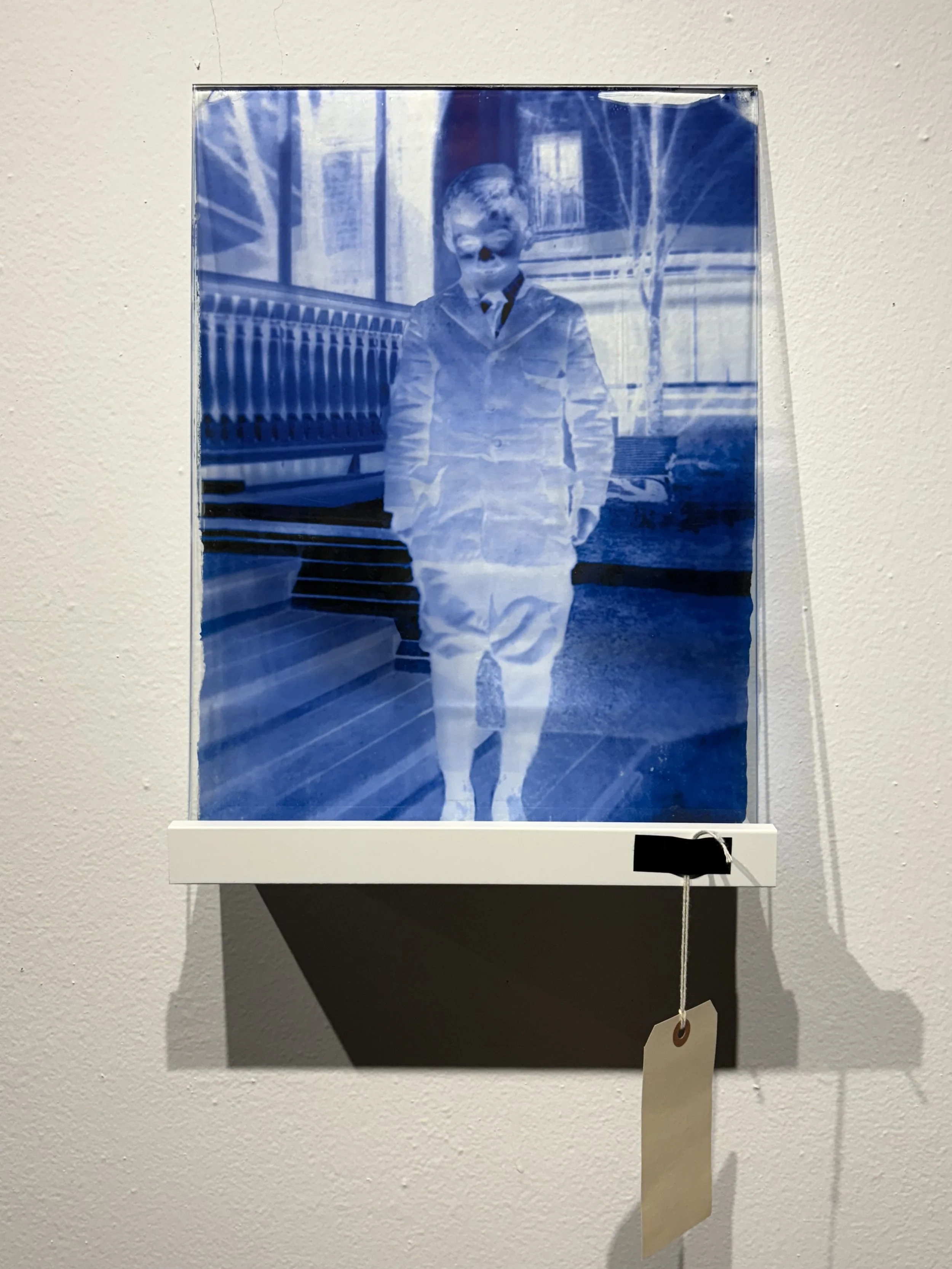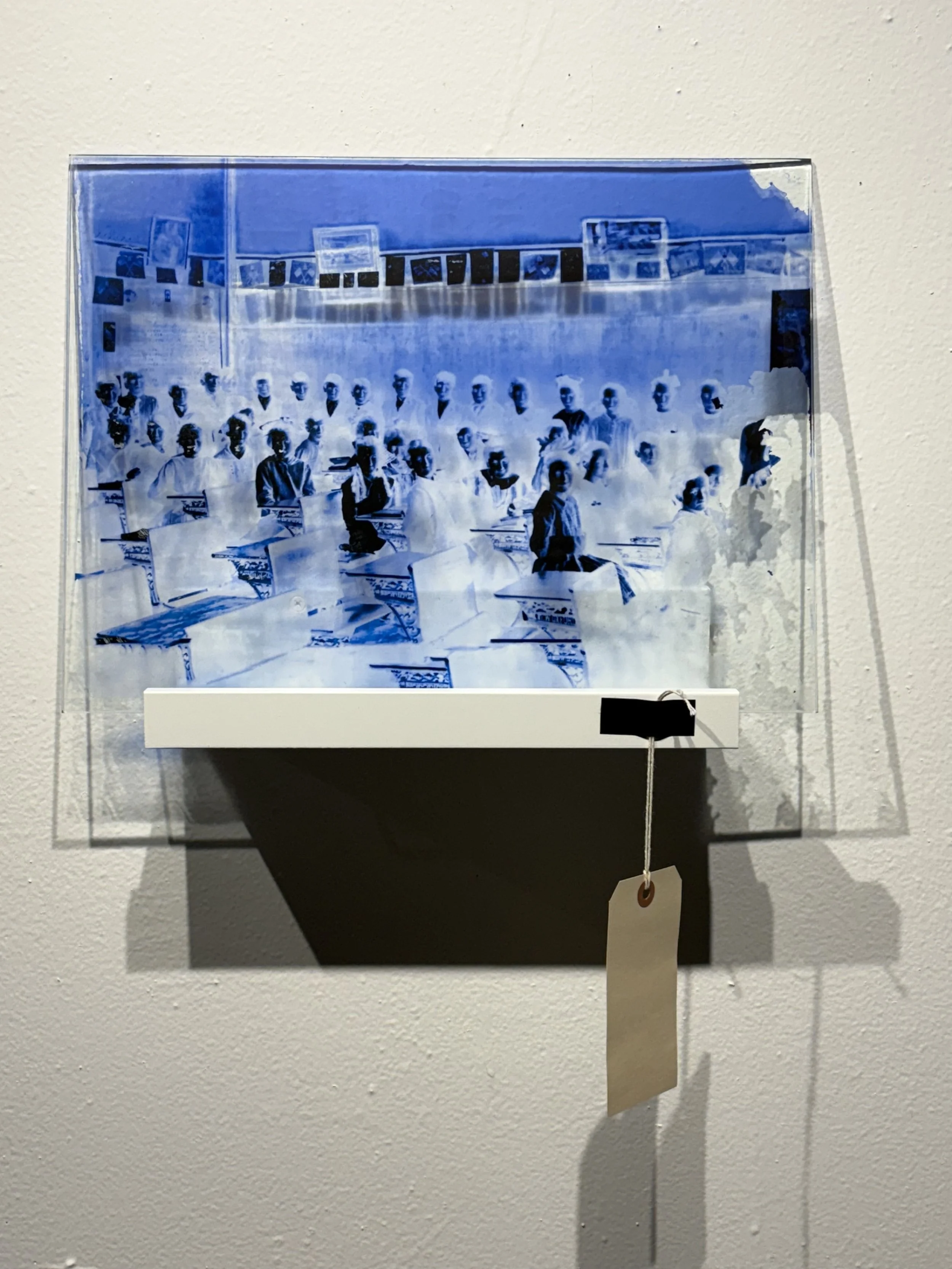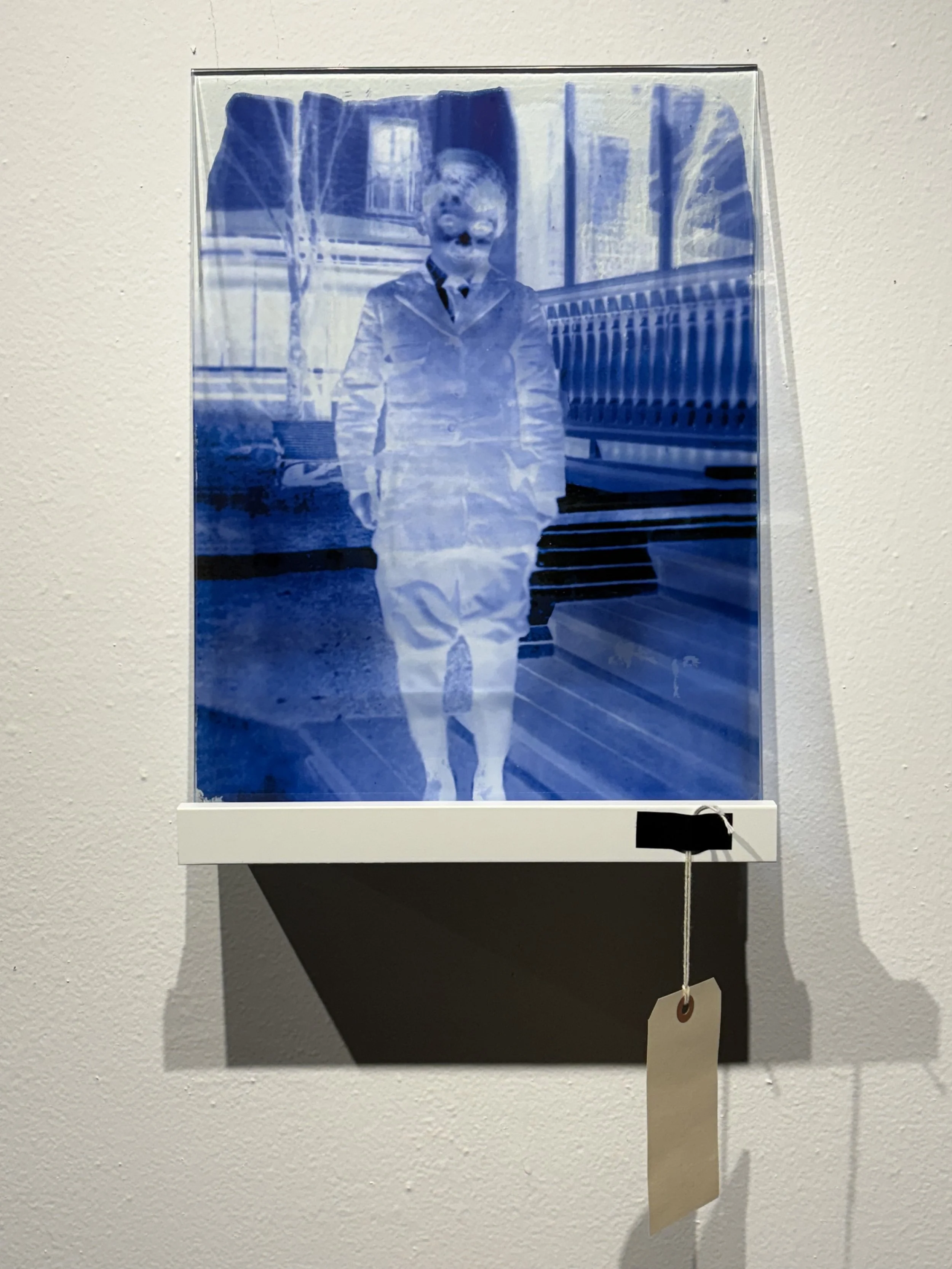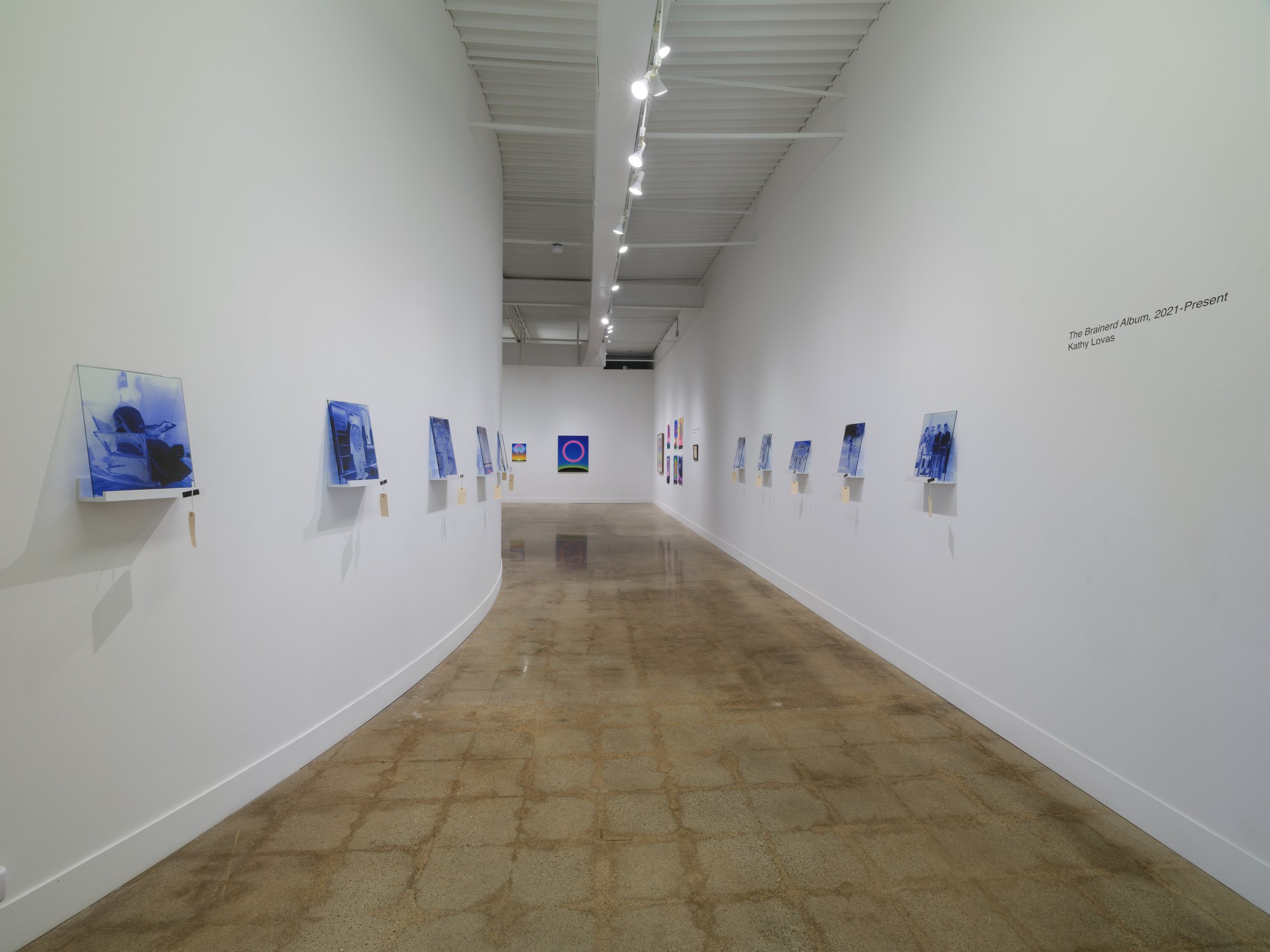

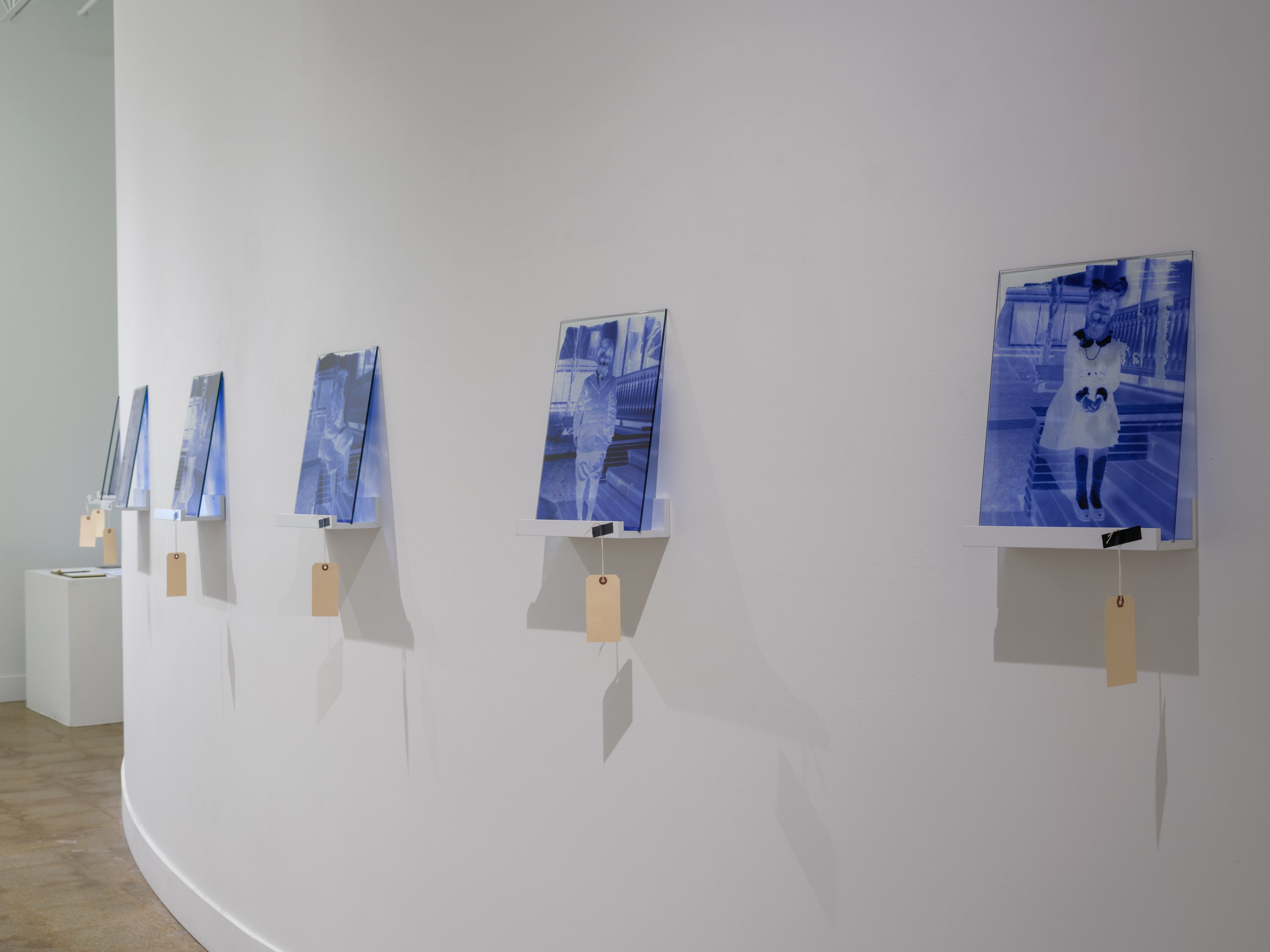
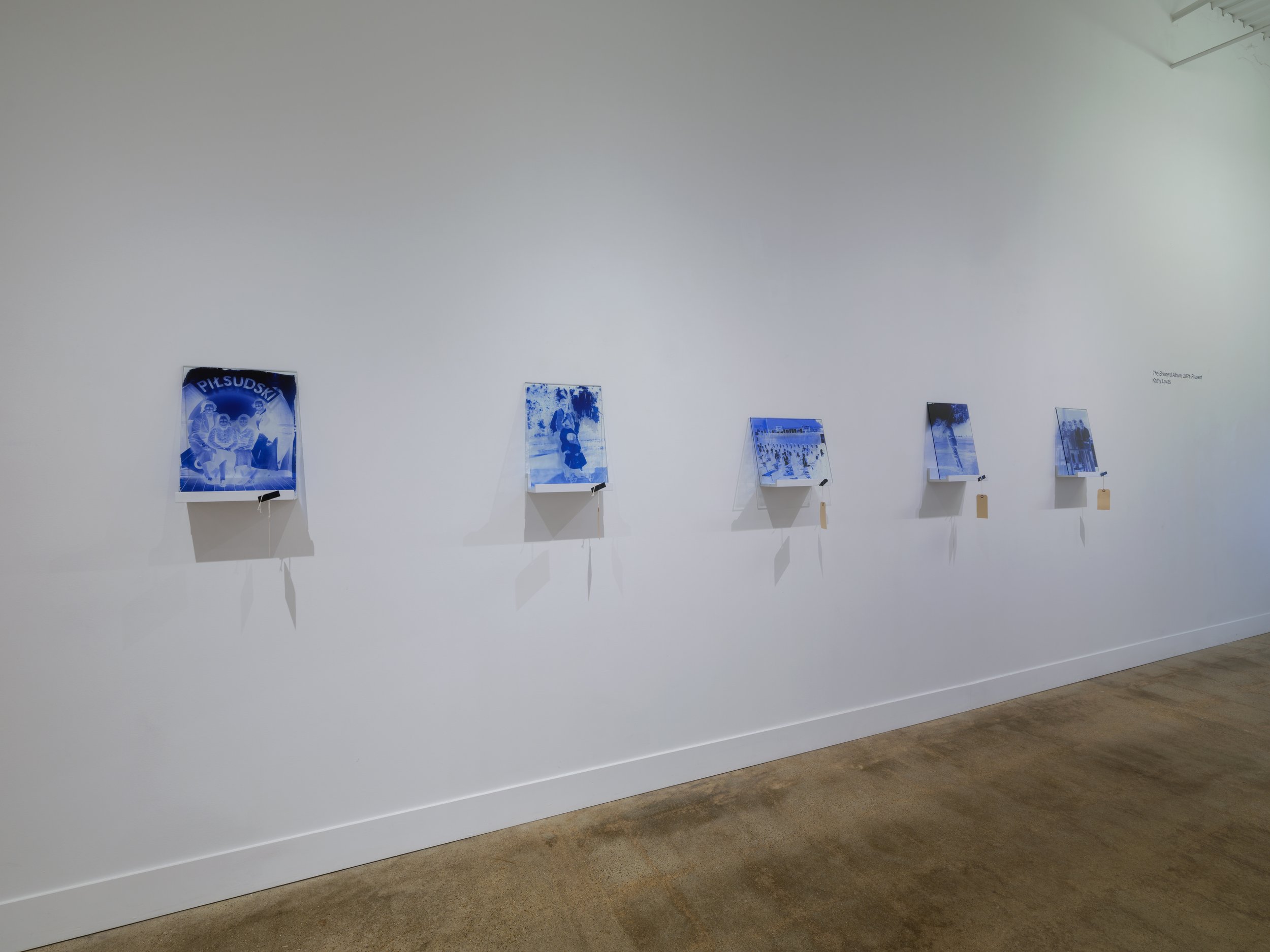
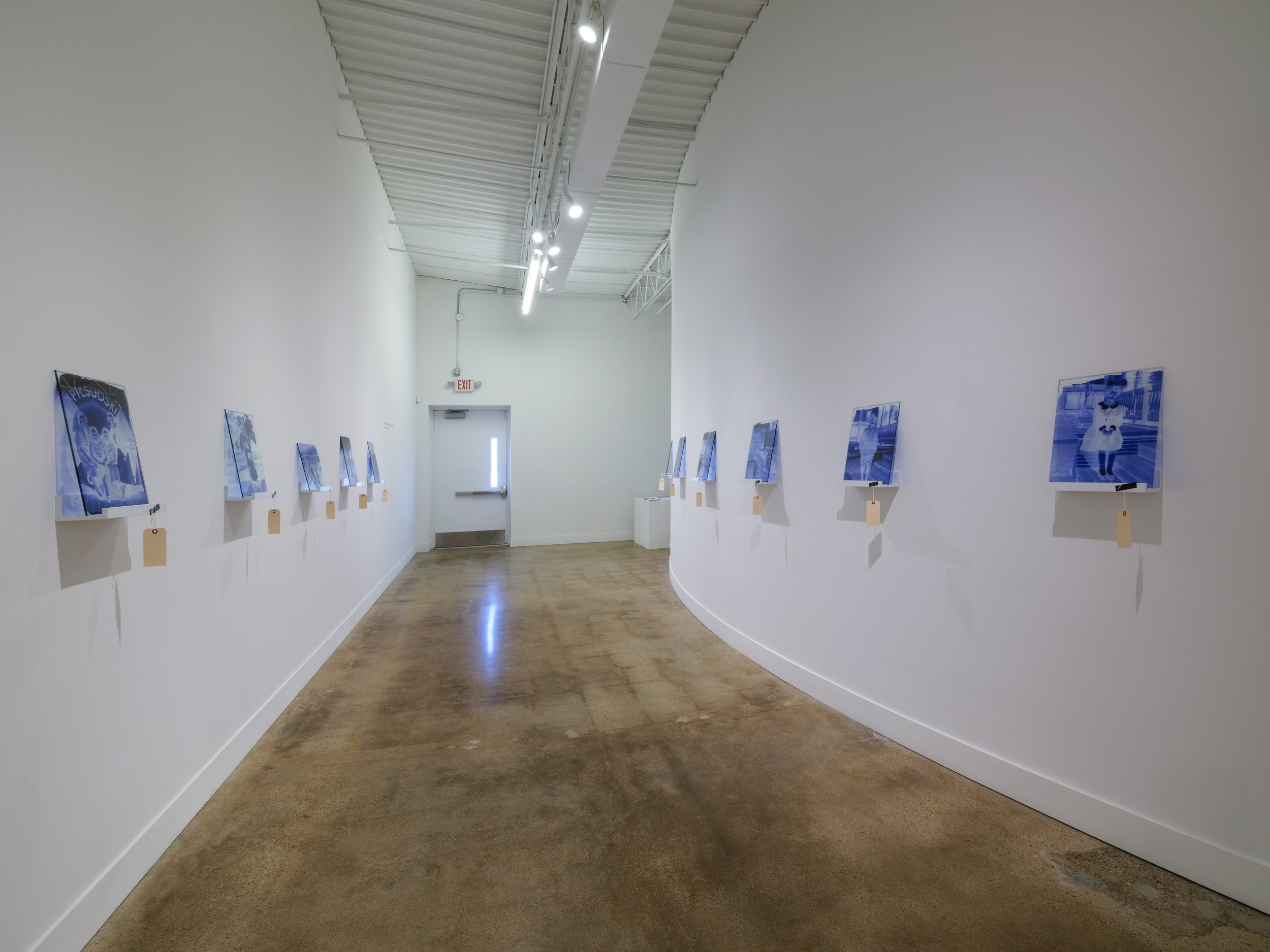
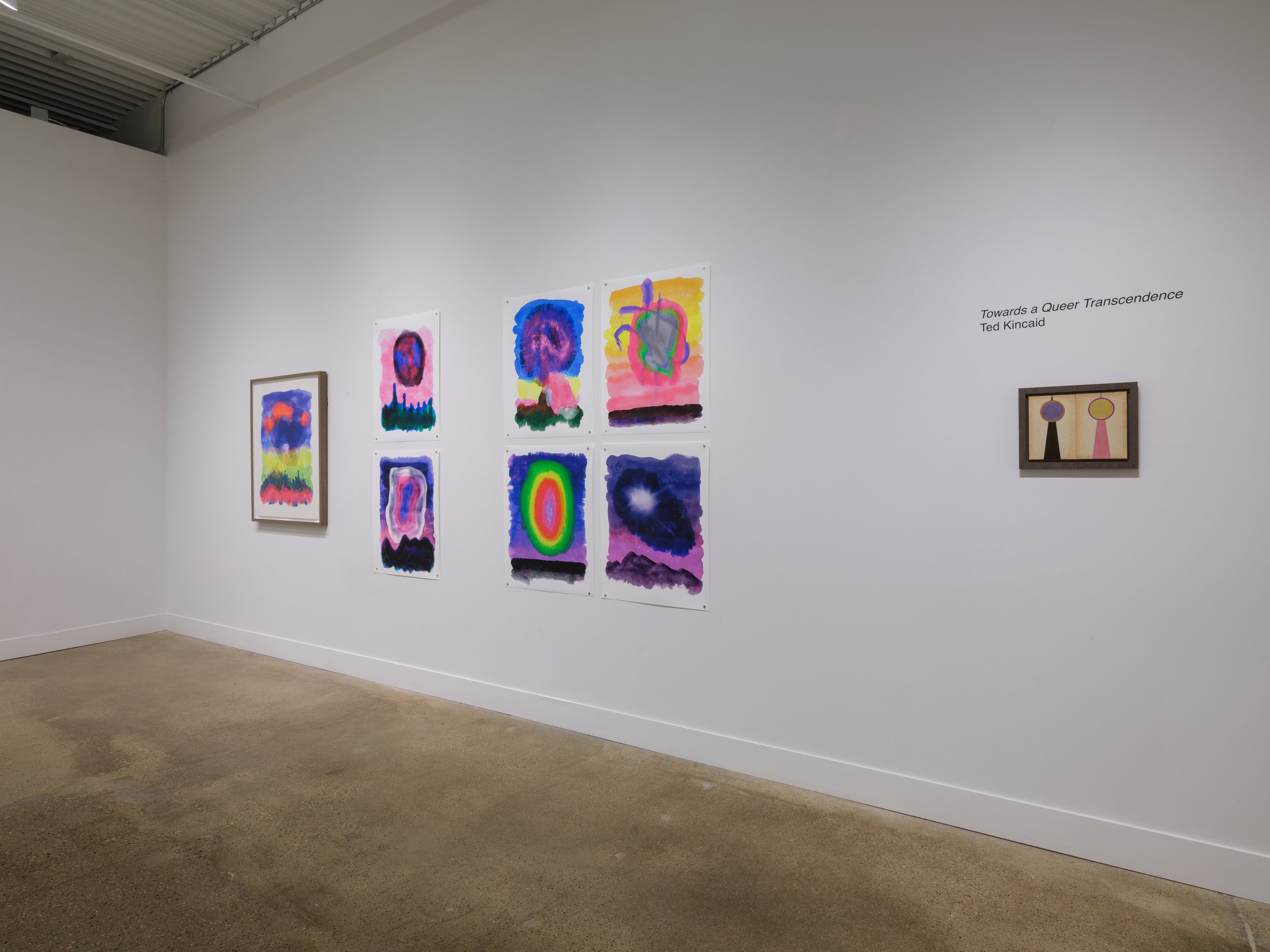
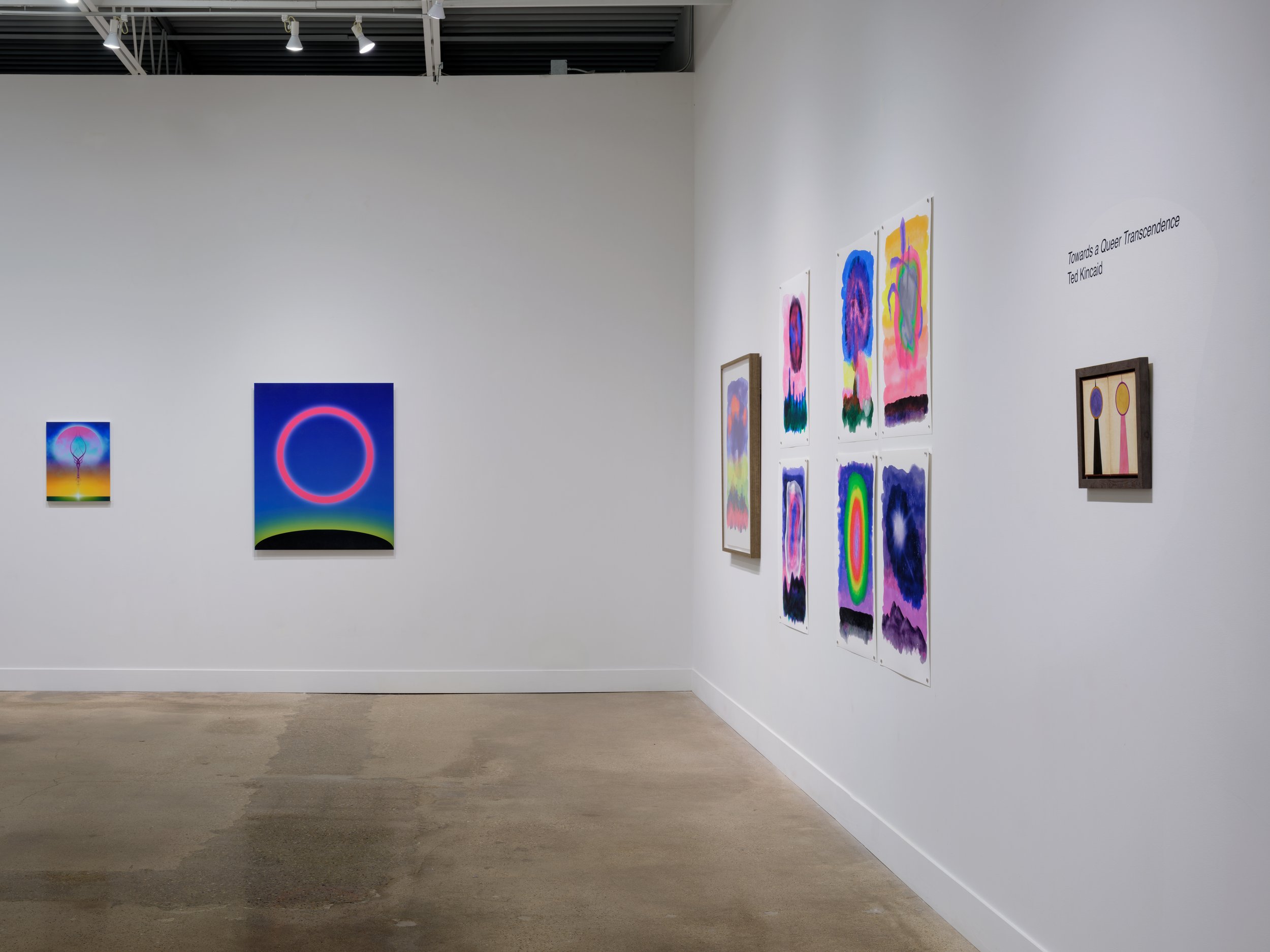


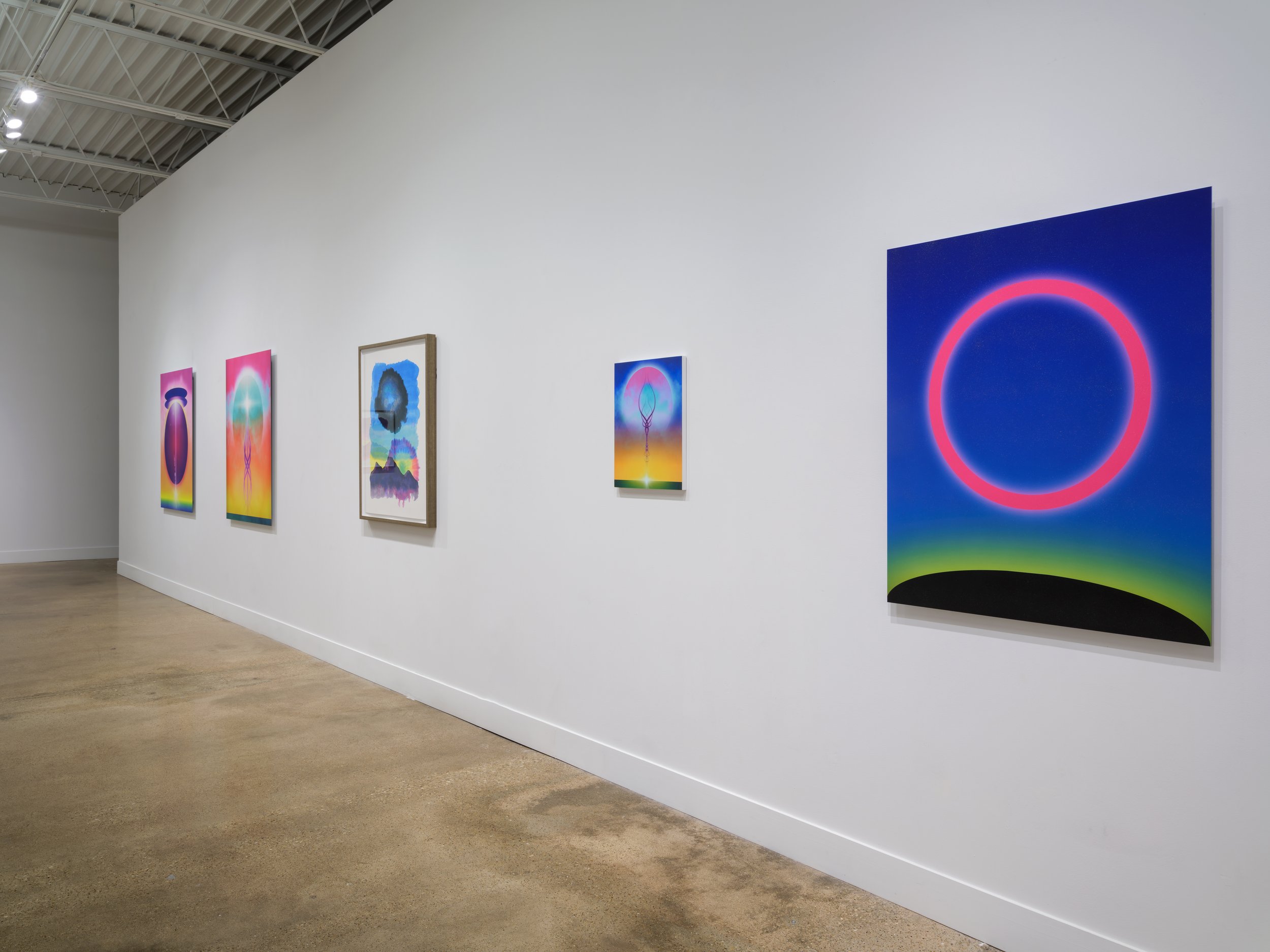


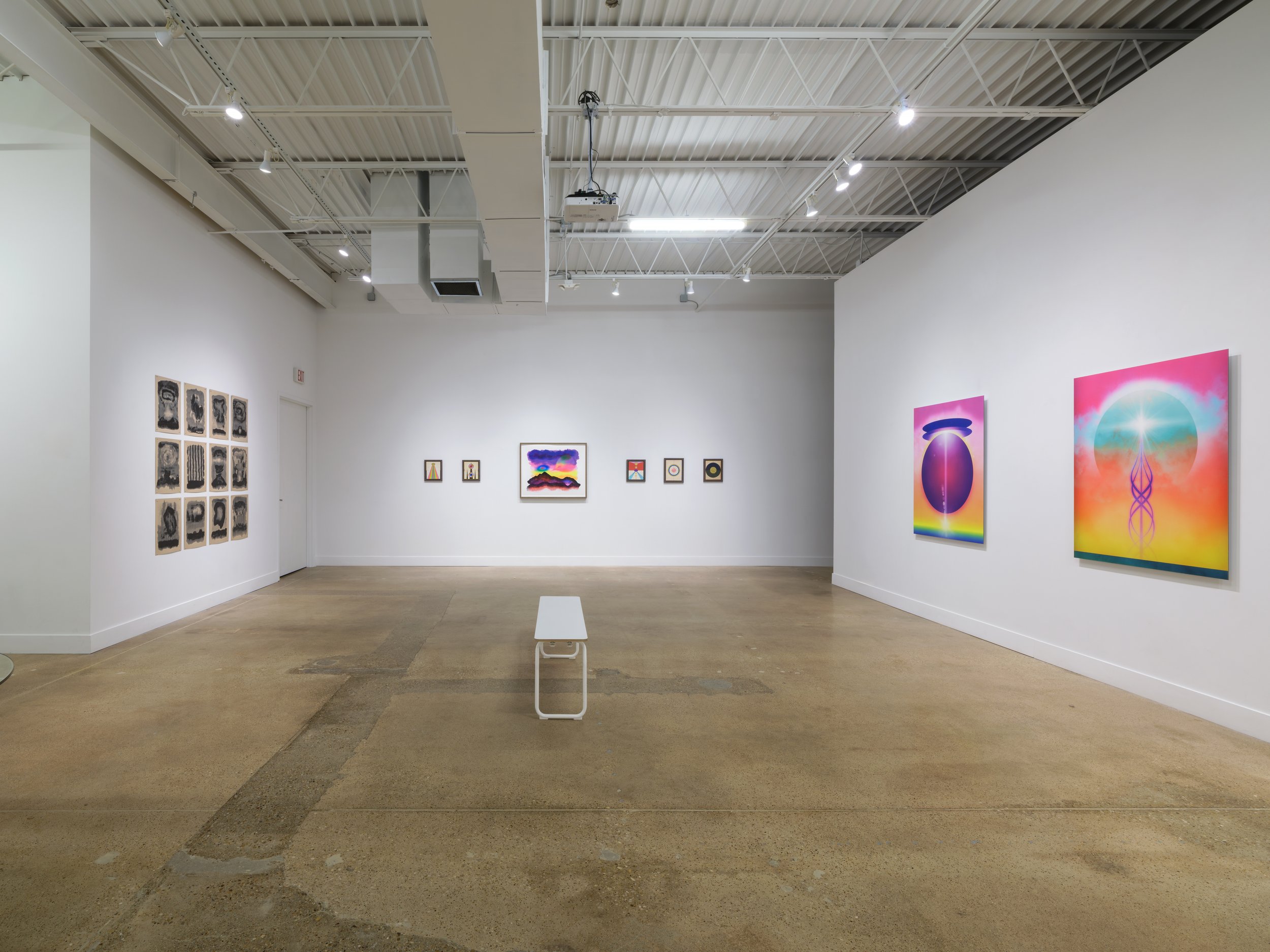
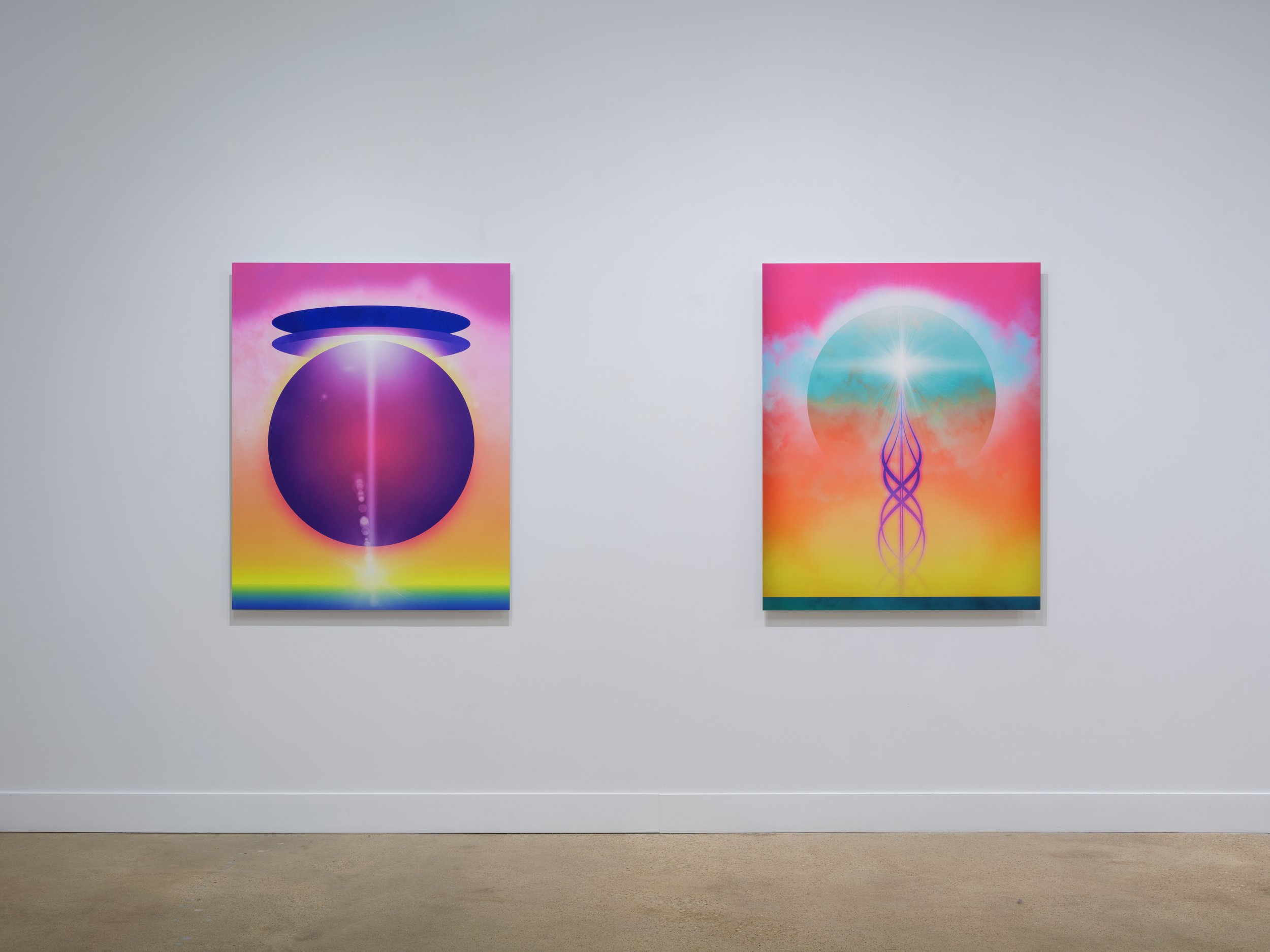
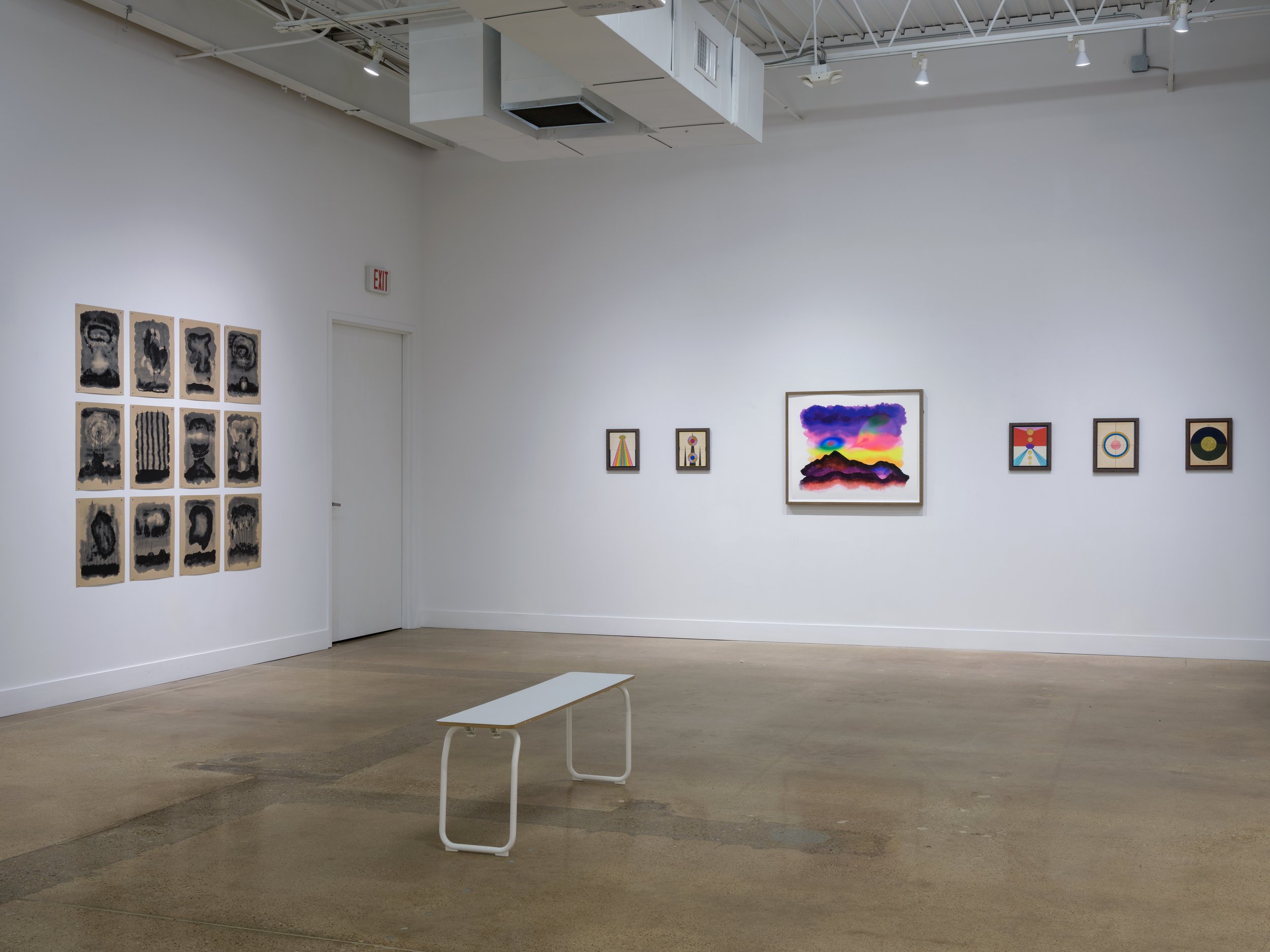
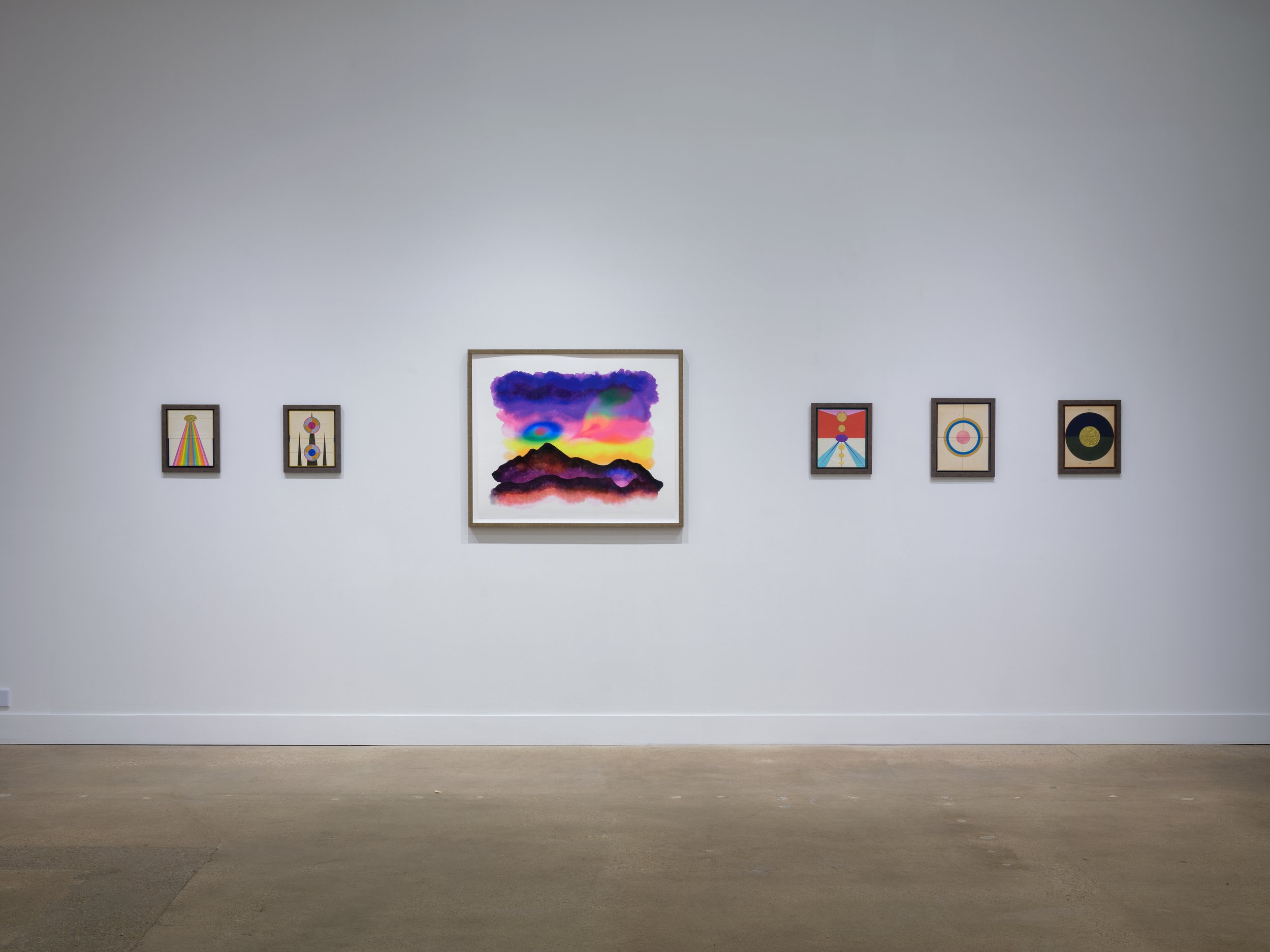
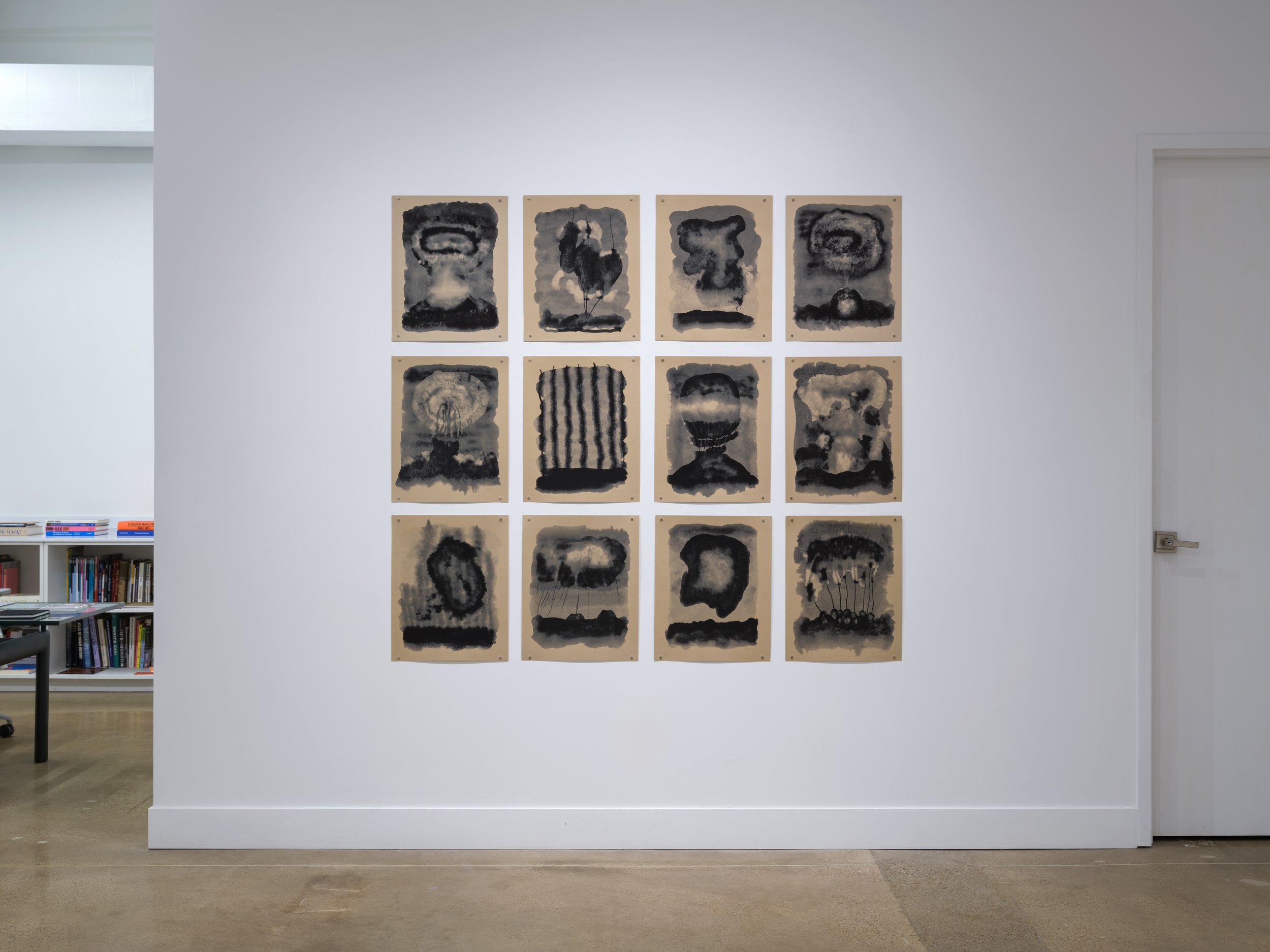
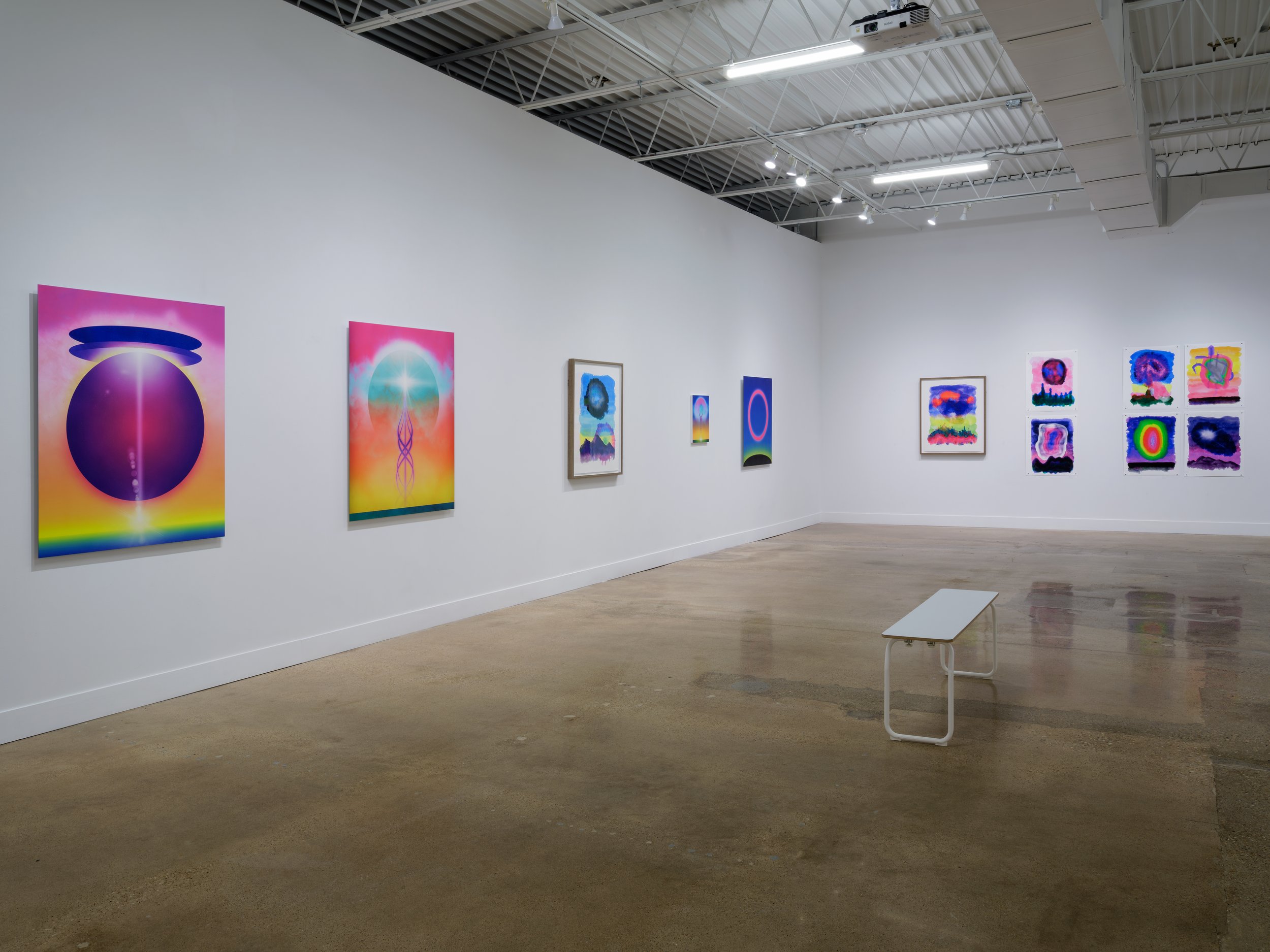
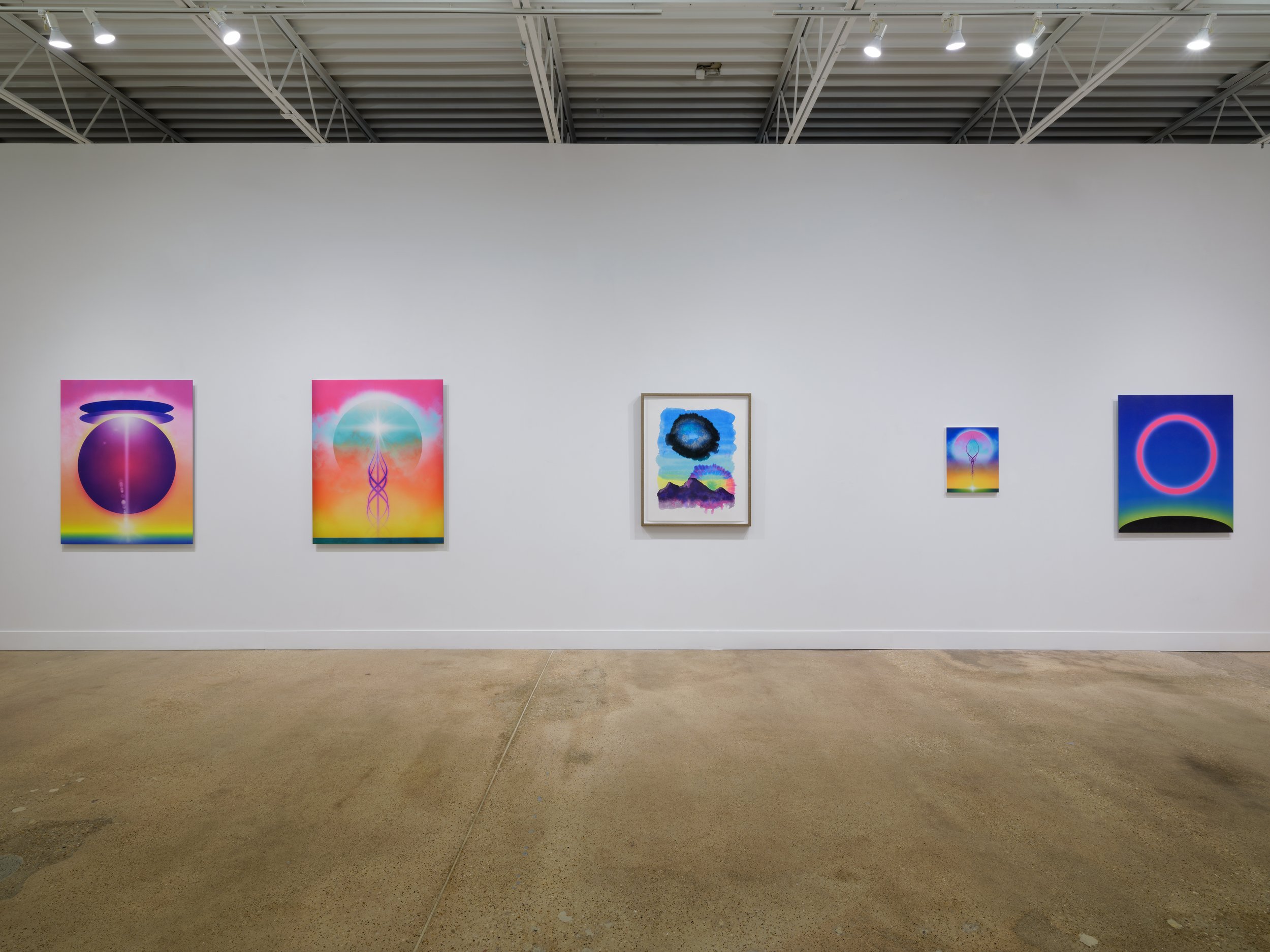
Ted Kincaid: Towards a Queer Transcendence
March 8 - April 15, 2025
Theosophic Study 1022, 2024, Acrylic, Ink & Iridescent Powder on Found Book Cover, 9 x 11 3/4"
Artist Ted Kincaid makes a return to Liliana Bloch Gallery with an exhibition that showcases a striking evolution in his artistic practice while preserving the thematic continuity that has defined his remarkable four-decade career. Towards A Queer Transcendence continues the ongoing journey of a conceptual artist increasingly drawn to a realm beyond what can be seen, whose work has continually challenged our notions of what is before us, versus our perceptions, desires, illusions and dreams.
Queer transcendence is a concept that intersects queer theory and spiritual metaphysics. It refers to the idea of moving beyond or surpassing outmoded cultural and traditional binary understandings of gender, sexuality, and identity. This work moves from an exploration of the external world, whether real or imagined, and instead ventures beyond the physical to explore the spiritual, particularly in the form of Queer Inner Divinity; encapsulating the profound recognition and celebration of the inherent sacredness and authenticity within individuals who identify as queer. It signifies the acknowledgment and celebrates the divine essence present within each person, irrespective of gender identity, sexual orientation, or societal norms.
At its core, queer transcendence challenges societal norms and constructs that limit or restrict individuals based on their gender or sexual orientation. It posits the embracing of complexity, ambiguity, and multiplicity in identity, rather than adhering to rigid definitions. It is my goal for this work to truly transgress the constraints of heteronormativity and cisnormativity, as well as exploring alternative ways of being and experiencing the world. It encompasses spiritual or metaphysical dimensions, seeking to connect with something larger while embracing the divine essence of queer identity.
For three decades, Ted Kincaid has systematically subverted the notion of an objective photographic record and examined the play between painting and photography. Kincaid has created multiple series of works that explore the discourse between a manufactured image that appears to be a straightforward photograph and an actual photograph that has been altered so fantastically that the viewer would assume it is a painting. To put it simply, his paintings are informed by photography, and his photographs are influenced by painting.
Kincaid is one of the most recognized and respected artists from North Texas. He has been reviewed in ARTFORUM and is included in the permanent collections of the Dallas Museum of Art, L’Associazione Fotografica Imago, Arezzo, Italy, the Museum of Fine Arts in Houston, the Museum of Fine Arts in San Antonio, The Columbus Museum, and the Georgia Museum of Art.
Theosophic Study 1108, 2024, Acrylic, Ink, Iridescent Powder & Glitter on Found Book Cover, 11 5/8 x 8 1/2"
A Hymn to Limitless Being, 2025, Pigment on Rag Paper, Mounted to Board, Hand-Varnished with Iridescent Medium, 50” x 40”
The Healing Place, 2024, Ink on paper, 30” x 24”
Theosophic Study 1028, 2024, Acrylic, Ink, Iridescent Powder on Found Book Cover,
12 3/4" x 9 3/4”
A Universe Wears My Name, 2025, Pigment on Rag Paper, Mounted to Board, Hand-Varnished with Iridescent Medium, 50” x 40”
A Symphony of Solitude, 2024, Ink on paper,
35” x 28”
Kathy Lovas: The Brainerd Album, 2021-Present
The Brainerd Album: Billy, view 1, 2025, DASS transfer on glass, wood shelf, tape, manila tag, Glass Size: 12” W x 16”H, Tag Size: ~2” W x 4” H
The Brainerd Album: Classroom, 2025, DASS transfer on glass, wood shelf, tape, manila tag, Glass Size: 12” W x 16”H, Tag Size: ~2” W x 4” H
The Brainerd Album: Dad Golf, 2025, DASS transfer on glass, wood shelf, tape, manila tag, Glass Size: 12” W x 16”H, Tag Size: ~2” W x 4” H
The Brainerd Album: Billy, view 2, 2025, DASS transfer on glass, wood shelf, tape, manila tag, Glass Size: 12” W x 16”H, Tag Size: ~2” W x 4” H
Kathy Lovas's current and ongoing project titled The Brainerd Album examines a group of images appropriated from an early 20th-century photo album kept by her grandparents, who lived in Brainerd, MN. Printed monochromatically via the DASS inkjet transfer process onto glass, the works are expressive of ideas about memory, ephemerality, surface tension, and references to early photographic processes, such as glass negatives and Cyanotype. The original album of 30 pages contains approximately 100 2x3" silver gelatin photographs taken by her uncle Thomas Walter Cleary of his immediate family, plus friends, pets, and significant buildings, such as the family home and neighborhood school. The glass prints are each presented leaning against a wall on a small support shelf to emphasize the work's 'object-ness' and fragility. A blank manila tag speaks to her ongoing interest in the idea of the archive.
The Brainerd Album project advances her career-long investigation into the ontology of photography. Freely moving between photography, sculpture, and installation, Lovas’s projects are based on narratives about current or historical events, memories from her early life, or familiar subject matter. All her projects examine photographic indexicality, the archive, and the frame.
Kathy Lovas was born in Duluth, Minnesota. She holds a B.S. degree in biology from St. Mary’s College, Notre Dame, Indiana and an MFA in photography from Texas Woman’s University in Denton. She is a 1995 recipient of a Mid-America Arts Alliance National Endowment for the Arts Fellowship in photography and was a 1991 fellow of the American Photography Institute National Graduate Seminar at New York University.
Selected exhibitions of her work include Lawndale Art Center, Galveston Art Center, Women and Their Work, Handley-Hicks Gallery, Fort Worth and Old Jail Art Center. In 2018, Lovas had a mid-career retrospective exhibition titled Close-Up-Magic at Gallery 219 at Eastfield College in Dallas, Texas, curated by Iris Bechtol. She has been a resident artist at Project Row Houses in Houston, Connemara Conservancy in Allen, TX and the Atlantic Center for the Arts in Florida. She recently created site-specific installations at UNT on the Square in Denton, DiverseWorks, the Art Museum of Southeast Texas, the Arlington Museum of Art, UT San Antonio Satellite Space at Blue Star, and the Warehouse Theater in Greenville, SC.
Kathy’s work is included in the following collections: Capital One, Dallas, TX; PINHOLE Resource, San Lorenzo, NM; TRISOLINI Gallery, Ohio University, Athens, OH, and The Willis Library at the University of North Texas in Denton, TX. Kathy Lovas lives and works in Dallas, Texas.
The Brainerd Album: Family Steps, 2025, DASS transfer on glass, wood shelf, tape, manila tag, Glass Size: 12” W x 16”H, Tag Size: ~2” W x 4” H
The Brainerd Album: Pilsudski, 2025, DASS transfer on glass, wood shelf, tape, manila tag, Glass Size: 12” W x 16”H, Tag Size: ~2” W x 4” H





